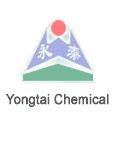Description
Thiourea dioxide is also called formamidine-sulfinic acid or aminoiminomethanesulfinic acid and is often abbreviated as TDO or TUD. Thiourea dioxide is a powdered stable compound, which dissolves in water and decomposes gradually to produce sulfoxylic acid through formamidine-sulfinic acid to exhibit a reducing action. This reaction is promoted by the application of heat or in the presence of an alkali, and a strong reducing action is thereby exhibited. But, this reaction is slow, and particularly in an acidic to weakly alkaline region.
Technical Information
Chemical Name: Thiourea Dioxide
Synonyms: Formamidine sulfinic acid, FAS, TDO
Molecular Formula: CH4N2O2S
Molecular Weight: 108.11
CAS Number: 1758-73-2
Product Properties Standard Specifications
Purity, %: Min. 99.0
Thiourea, % :Max. 0.1
Moisture,% :Max. 0.05
Iron (Fe), ppm: Max. 10
Sulphate, % :Max. 0.17
Appearance :White crystalline powder
Packing:25 kgs kraft paper bag or 50kgs in fiber drum
Applications
Thiourea dioxide (TDO) is a strong reductant which re-arranges under alkaline conditions to form formamidine sulphinic acid. This product is used in leather processing industry, paper, pulp and board industry, photographic industry, textile processing industry, bleaching and reducing agents. This product is also a component of decolorisation agents. TDO bleaching has recently come to be spotlighted as a substitute for NaClO bleaching in
bleaching of waste wood-free or mechanical paper and as a substitute for Sodium Hydrosulfite bleaching in post-bleaching after hydrogen peroxide deinking/bleaching of waste newspaper, from the viewpoint of the problem of waste water pollution by organic chlorine compounds represented by dioxins, demand for energy conservation, decoloring effect on dye type coloring materials, etc. TDO bleaching has a considerable decoloring effect on dye type coloring materials, like Sodium Hydrosulfite bleaching, and TDO has a property of reacting with oxygen in air slowly as compared with Sodium Hydrosulfite. Even when a presently used NaClO bleaching equipment is diverted as it is, a loss due to oxidative decomposition is relatively small and a bleach brightness equal to that attained by NaClO bleaching can be attained by choosing a suitable using amount of TDO.
TDO undergoes relatively rarely oxidative decomposition by oxygen in air. TDO bleaching is suitable for bleaching pulp having a high consistency by usual equipment while achieving a saving in energy. TDO has been very effective on a wide variety of pulp sources as a reductive bleaching aid in the pulp and paper industry. The application of TDO is crucial to achieve optimal brightness gain in the deinking process.
Handling and Storage
Storage
Store in a cool (below 30 °C), dry, well ventilated area away from all source of ignition and
out of direct sunlight.
Keep away from incompatible materials. Keep containers tightly closed. Do not store in
unlabeled or mislabeled containers.
Protect from moisture. Do not store near combustible materials. Keep containers well
sealed, seal only with original vent cap. Ensure pressure relief and adequate ventilation.
Store separately from organics and reducing materials. Avoid contamination which may
lead to decomposition.
Handling
Avoid contact with eyes, skin, and clothing. Use with adequate ventilation.
Do not swallow. Avoid breathing vapors, mists, or dust. Do not eat, drink, or smoke in work area.
Prevent contact with combustible or organic materials.
Label containers and keep them tightly closed when not in use.
Wash thoroughly after handling.
First-aid Measures
Inhalation- Remove affected person to fresh air. Do not use mouth-to mouth resuscitation.
Seek medical attention if effects persist.
Eye contact-Flush eyes with running water for at least 15 minutes with eyelids held open. Seek specialist advice.
Skin contact-Wash affected skin with soap and mild detergent and large amounts of
water.
Ingestion- Remove from exposure to fresh air immediately. If breathing is difficult, give
oxygen. Do not use mouth-to-mouth resuscitation. Seek medical service immediately.
Shipping Information
Proper Shipping Name: Thiourea Dioxide
UN Number: UN3341
Hazard Class: 4.2
Labels: 4.2(Flammable Solid)
Packing Group: III
Please read the MSDS for this chemical before using. |




